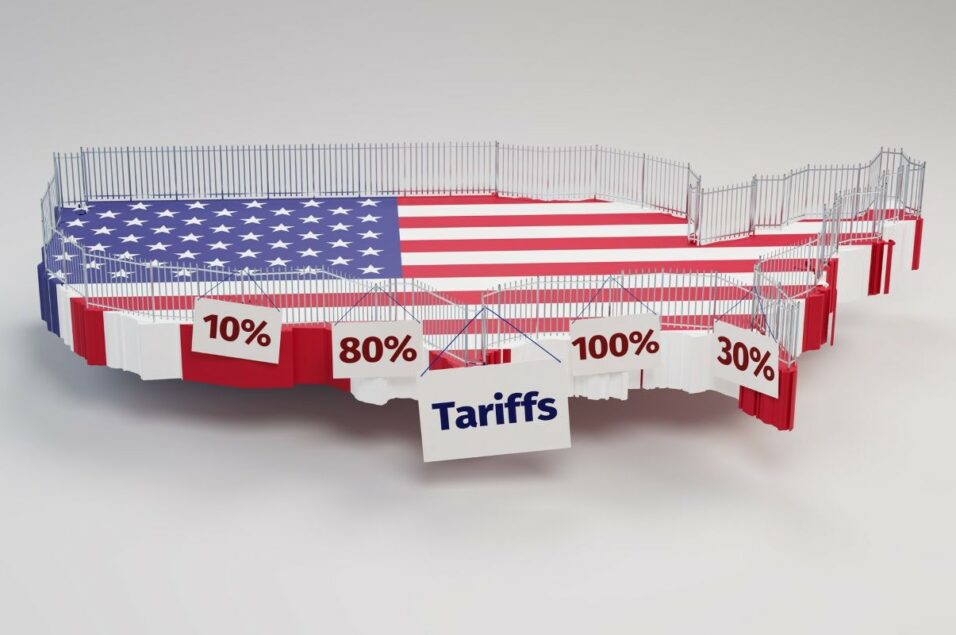[ad_1]
Uncertainty is the enemy of efficient, low-cost manufacturing. That lesson has been driven home by the geopolitical whipsawing of the last few years. Whether due to pile-ups of containers at ports due to strikes, diversion of trade routes to avoid hot conflict zones, or any of the other monkey wrenches, we’ve seen a new degree of unpredictability thrown into carefully designed global supply chains.
Some of it is unavoidable, like natural disasters, but some is the direct result of actions taken in the name of driving economic vitality and security of strategic industries.
Over the past week, the Trump administration announced a sweeping range of new tariffs of 25% on imports from Mexico and Canada, and an increase of 10% in tariffs already in place on China. Trump then suddenly announced a month-long pause on the Mexico and Canada tariff measures — and by the time you read this article, the situation will likely be entirely different again.
These dramatic and sudden shifts create inefficiencies even if they never to go into effect, simply because companies need to take risk-mitigation actions, such as buying extra products and material, or negotiating with alternative suppliers of goods.
Tariffs can be a powerful and effective tool for a large economy. Since the implementation of tariffs on China in 2017, we’ve seen a dramatic shift in trade patterns, with China shrinking from accounting for more than 21% of U.S. imports to less than 14%, while Mexico and Southeast Asia have risen to fill the gap. At the same time, U.S. manufacturing investment has more than doubled to more than $220 billion a year over the same period. If the goal was reducing dependence on Chinese imports and increasing domestic U.S. manufacturing, then there’s clearly been movement toward it.
But these measures can also come with costs and unpredictable consequences. Retaliatory measures are difficult to foresee, and as we experienced with the tariff rounds of 2017, there were companies that were clear winners and losers in the changing economic landscape and balance of supply chain power. The U.S. agricultural sector suffered losses due to countering tariffs by China. We also saw pressure on inflation due to higher costs, while companies like Ford and GM reported significant impacts to profitability, and some smaller players in the technology sector exited the market.
This time around, at the macro level, recent studies such as the Tax Foundation’s General Equilibrium Model indicate potential shifts in growth and employment that could significantly impact business plans, investment and supply chains. That study estimated that the currently contemplated round of tariffs could have a significant undesirable impact, including:
- A 1.3% reduction in GDP under a scenario of universal tariffs;
- A 0.4% GDP decline under a scenario focused on Canada, Mexico, and China, and
- A loss of 1.1 million full-time jobs, with 286,000 jobs lost in Canada/Mexico-related trade alone.
The U.S., Canada and Mexico make up a tightly integrated manufacturing and supply network that is highly interdependent. It’s not just about inexpensive finished products moving across the border. Intermediate work in progress, in sectors such as the automotive industry, can flow across multiple borders before final vehicle assembly. We can expect cost impacts, delays and disruptions as new processes and inspections are put into place, as well as less predictability in business performance as these dynamics play out.
Some companies are better positioned than others, depending on their exposure to China, Canada and Mexico. This is both a risk and an opportunity, as organizations scramble to determine whether to play defense and protect their supply bases, or go on the attack to capture market share of competitors who have greater cost exposure or less ability to pass price increases along to their customers or suppliers.
The best companies have refined their supply chain response playbooks over the last few years, and have taken specific actions to better weather the disruptions. These businesses have focused on three key levers:
Lever 1 — Mitigating immediate risks (short-term actions):
- Negotiate with suppliers. Develop a tailored negotiation strategy to share tariff-related costs while maintaining competitive pricing.
- Strengthen supply base communications. Collaborate with suppliers on scenario planning, and share insights on tariffs and market changes.
- Adjust pricing strategies. Consider price increases, balancing this against the possibility of reduced demand.
- Lobby for exemptions. Success rates will vary significantly, but some companies have secured relief.
Lever 2 — Making structural adjustments (medium-term actions):
- Diversify the supply base. Reduce dependency on single-source suppliers.
- Map multi-tier risks. Assess supply chain vulnerabilities beyond Tier 1 suppliers. Use risk-monitoring providers and third-party advisers to ensure thorough assessments.
- Assess stockpiling inventory. Evaluate the expected benefits of stockpiling versus risks to cash flow and storage capacity.
- Plan responses. Create a solid governance structure and response strategies for different scenarios.
Lever 3 — Building supply chain resilience (long-term actions):
- Reshore production. This can protect against future policy changes, including increased tariffs, in return for higher labor costs.
- Invest in technology and automation. This can offset higher reshoring costs, increase efficiency, and improve supply chain flexibility and transparency.
- Secure critical intellectual property. Secure ownership of key design details and tools enables flexible production shifts.
- Reassess partnerships. Partner with suppliers and logistics providers who share your long-term approach to resilience.
While we know uncertainty is the enemy, we also know that the best companies will adapt their supply chains and thrive in dynamic times.
Matt Lekstutis is director of North America with Efficio.
[ad_2]
Source link



